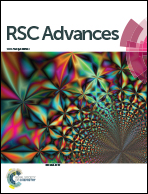Uniform core–shell Cu6Sn5@C nanospheres with controllable synthesis and excellent lithium storage performances†
Abstract
Metallic tin (Sn) is one of the most promising alternatives to graphite anodes for lithium ion batteries due to its higher theoretical capacity, higher packing density and safer thermodynamic potential, while the huge volume transformation during repeated cycling leads to rapid pulverization and consequently poor capacity retention. This work provides an easy-to-control method to prepare uniform core–shell Cu6Sn5@C nanospheres in which Cu@Sn cores (40–50 nm in diameter) are well encapsulated by PANI-derived carbon layers with a thickness of ∼5 nm. The obtained Cu6Sn5@C exhibits an excellent cycling ability and good rate capabilities. Both the reversible capacity (518 mA h g−1) after 100 cycles and the initial coulombic efficiency (89.2%) are the highest values in Cu6Sn5-based materials. The impressive cycling performance is believed to result from the carbon coating that not only prevents particle agglomeration during the synthesis but also accommodates the vast structural transformation of the Cu6Sn5 nanocores during the electrochemical (de)lithiation process, so ensuring good ionic and electronic transport to the core. The effect of synthesis conditions on the composition are also investigated systematically.



 Please wait while we load your content...
Please wait while we load your content...